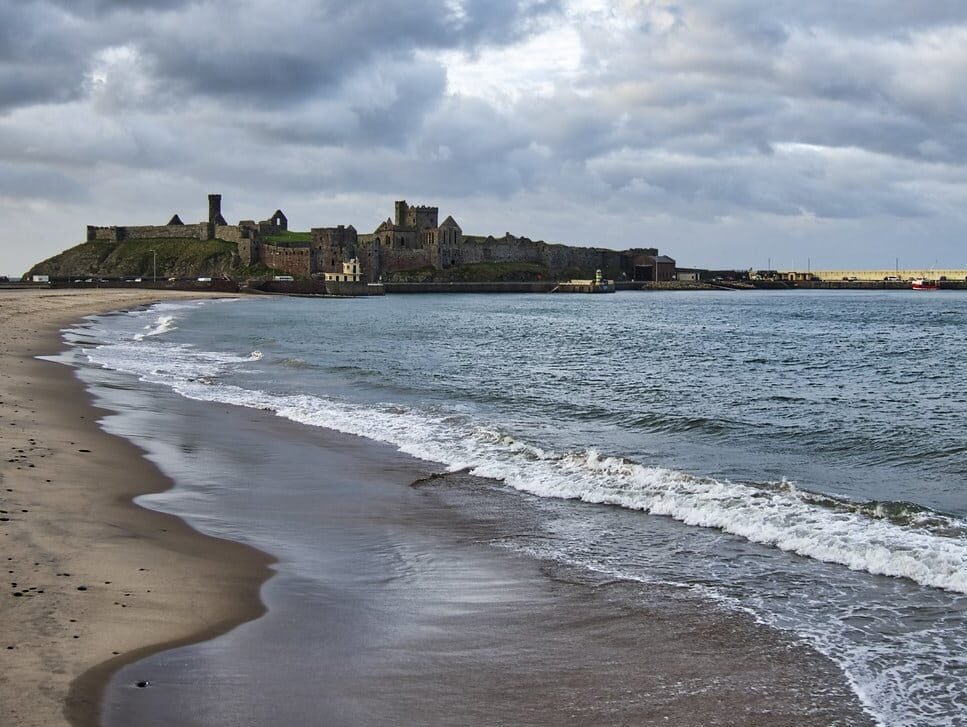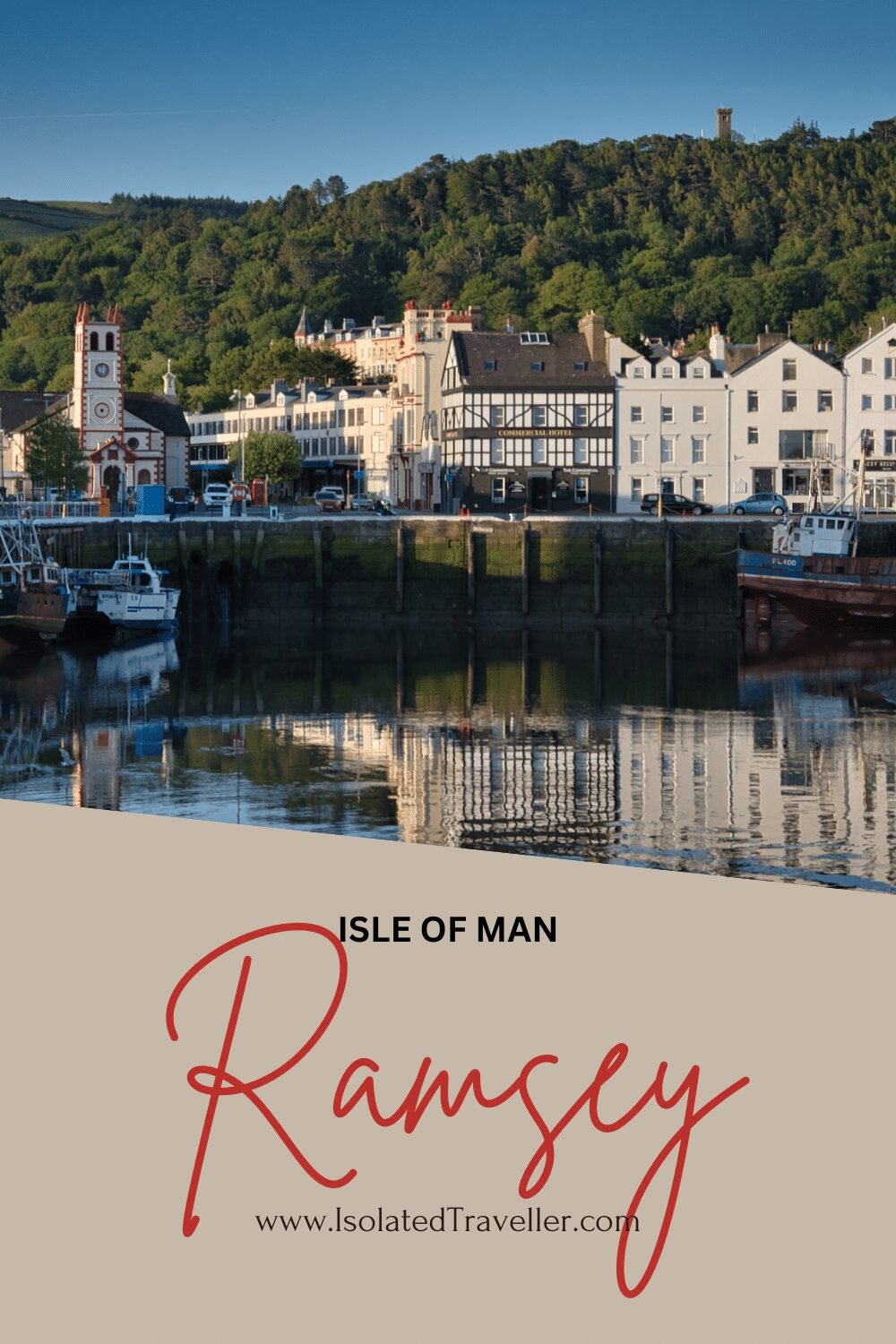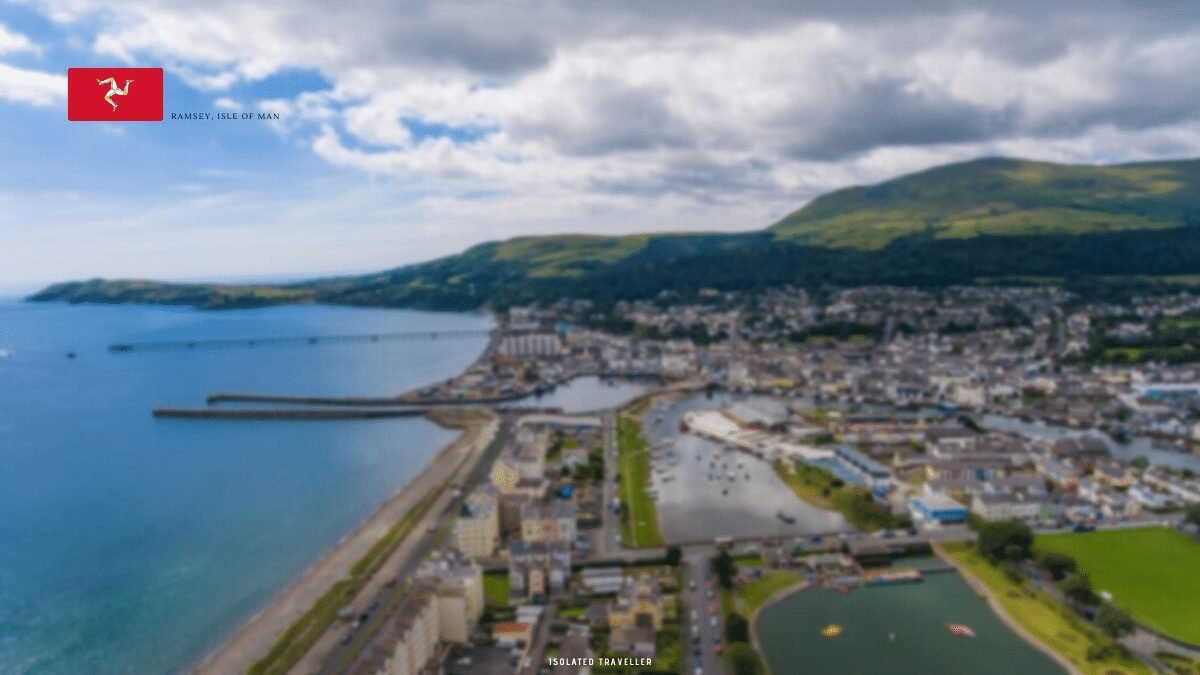Ramsey, Isle of Man
Ramsey is a town on the northern coast of the Isle of Man, a self-governing British Crown dependency in the Irish Sea. Ramsey, with a population of around 8,000 people, is the island’s second-largest town after the capital, Douglas.
Ramsey has a rich history dating back to Viking times, and the town’s name is thought to derive from the Old Norse word for “wild garlic”. Ramsey was an important trading centre in the Middle Ages, and the town’s harbour served as a hub for shipping goods such as wool, hides, and grain.
Ramsey is now a well-liked vacation spot for visitors who come to take advantage of the town’s stunning coastline, sand beaches, and scenic walks. The town is renowned for its historic architecture, with notable structures like the courthouse, St. Paul’s Church, and the town hall.
The Ramsey Sprint, a street race, and the Ramsey Agricultural Show, which honours the island’s rural heritage, are just a couple of the festivals and events that take place in Ramsey throughout the year.
Geography Of Ramsey
Ramsey can be found on the Isle of Man’s northern coast, a self-governing British Crown dependency in the Irish Sea. The Sulby River, which empties into Ramsey Bay, empties into the town’s location at its mouth.
The North Barrule mountain, which rises to a height of 565 meters (1,854 feet) above sea level to the south of the town, is the highest point in the hilly area that surrounds it. The town of Ramsey is comparatively flat, with its centre being only a few meters above sea level.
The Point of Ayre in the north and Maughold Head in the south make up Ramsey’s extensive coastline. Sand beaches, rocky outcrops, and low cliffs define the coastline. Water sports enthusiasts frequently travel to Ramsey Bay, which is protected by a breakwater and offers opportunities for sailing, windsurfing, and kayaking.
The rural areas surrounding the town of Ramsey are dominated by farmland, forests, and hills. A network of roads connects the town to other regions of the island. The A3 road connects Ramsey to the island’s capital, Douglas, and the A14 road provides access to the island’s northern regions.
Interesting Facts About Ramsey

History Of Ramsey
Ramsey’s origins can be traced to the Viking era when the town was known as Rhumsaa, which means “wild garlic river,” in English. The region’s natural harbour, which offered protection for their ships, attracted the Vikings. One of the few natural harbours on the Isle of Man’s northern coast is Ramsey Bay.
Ramsey developed into a significant trading hub during the Middle Ages, and its harbour served as a major shipping point for commodities like grain, wool, and hides. In the 13th century, the town received the designation of Royal Borough, which allowed it to impose tolls on goods passing through the town and holding markets.
Ramsey kept growing as a hub of trade and commerce throughout the 19th century, with the town’s economy heavily dependent on sectors like agriculture, shipbuilding, and fishing. The town’s population increased quickly, and by the turn of the century, it had overtaken Douglas as the second-largest settlement on the island.
Ramsey was heavily bombed by German aircraft during World War II, and many buildings were destroyed. The town was rebuilt after the war, and it is now a thriving neighbourhood with a rich history and culture.
The town hall, the courthouse, and St. Paul’s Church, which was constructed in the 19th century and has a striking spire that dominates the town’s skyline, are just a few of the historic structures and landmarks in Ramsey. The lifeboat station, which was built in 1829 and has a long history in the maritime industry, is still an important fixture in the town.
Ramsey Economy
Like the rest of the Isle of Man, Ramsey’s economy is diversified and supported by a number of different industries. The town’s economy is now centred on a number of industries, including tourism, finance, agriculture, and retail, despite the fact that historically Ramsey was a hub for shipping and trade.
Visitors who come to Ramsey to enjoy the town’s stunning coastline, sand beaches, and scenic walks are significant economic contributors. The town offers a variety of lodging choices, including hotels, bed and breakfasts, and self-catering homes, as well as a large selection of eateries, cafes, and bars to meet the needs of visitors.
There are many financial services companies operating in Ramsey, making the finance sector a significant contributor to the town’s economy. The Isle of Man is a well-known offshore financial hub, and Ramsey is well-positioned to profit from this industry given its close proximity to Douglas, the island’s capital.
The production of various crops and livestock on farms in the nearby rural areas contributes significantly to Ramsey’s economy. The town hosts a weekly farmers’ market where guests can buy products made locally, including food.
Ramsey’s economy also includes a sizeable portion of the retail sector, which includes a variety of establishments that serve both residents and tourists. There are several supermarkets and convenience stores in the town that cater to the needs of the local populace. The town has a mix of independent retailers and well-known high-street brands.
Overall, Ramsey’s economy is resilient and diverse, with a variety of industries making positive contributions to the well-being of the community.

Ramsey and nearby Attractions
Visitors can enjoy a variety of attractions in Ramsey and the neighbourhood. Among the most popular attractions are:
- Mooragh Park is a sizable park in the middle of Ramsey that is well-liked by families because it has a lake, a playground, tennis courts, and a mini-golf course.
- The Great Laxey Wheel is the biggest working waterwheel in the world and is an impressive sight. It is only a few miles south of Ramsey.
- Tynwald Hill: The Isle of Man’s parliament, the Tynwald, is housed on this historic Viking site, which is only a few miles from Ramsey. Atop the hill, visitors can take in expansive views of the surrounding countryside.
- Maughold Head: This rocky headland on the Isle of Man’s eastern coast offers breathtaking views of the Irish Sea and is a well-liked hiking location.
- Ramsey Bay: Ramsey Bay is a stunning coastline with sandy beaches and crystal-clear waters, making it a well-liked location for kayaking, windsurfing, and other types of water sports.
- The Grove Museum in Ramsey is a preserved 18th-century Georgian home that gives visitors a look at life in the past on the Isle of Man.
- The Milntown Estate is a lovely estate just outside of Ramsey with gardens, woodlands, and a cafe, making it a well-liked destination for a leisurely day trip.
Overall, Ramsey and its surrounding area have a plethora of attractions for visitors to explore and enjoy, ranging from historic sites and natural beauty spots to family-friendly parks and museums.

Related Articles

